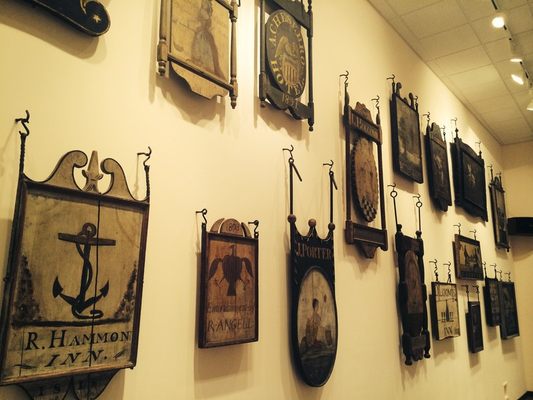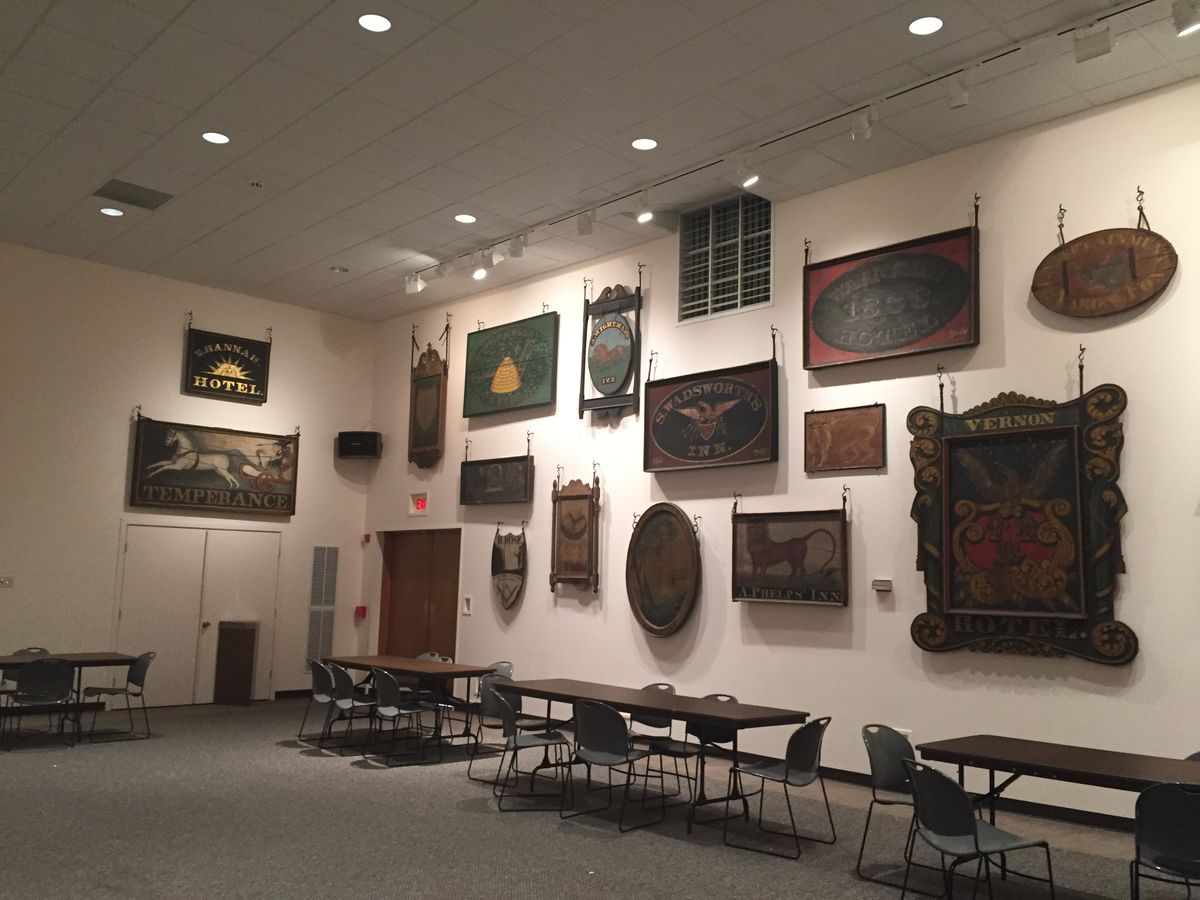About
The early American colonists were ferocious drinkers. Hot ale flips, warming wassails and planter’s punches were consumed in such alarming quantities that Benjamin Franklin published over 200 synonyms for being tipsy in the Pennsylvania Gazette on January 6, 1737.
Such was the standing of the tavern in the fledgling society, that colonial law actually required every town to have one. In low-ceilinged rooms, the early colonials would gather and, in the words of Benjamin Franklin, start the evening “loose in the hilts,” gradually becoming “nimptopsical,” finishing the night “wamble Crop’d,” before stumbling home “right before the Wind with all his Studding Sails out.”
The signage, though, was a rather difficult design challenge. While today restaurants and bars are often easily identifiable by the form and shape of their buildings, historic watering holes were virtually indistinguishable from the private residences on either side of them. They were literally public houses. The painted and carved saloon signs hanging outside would signpost to visitors that food, drinks and lodging were to be had inside.
Being made of wood, many of the old tavern signs have been lost to time. Between 1750 and 1850, there were approximately 50,000 of these signs mounted up and down the Eastern seaboard. Only a fraction of them still exist. The largest collection of colonial-era bar and inn signage in the country, at the Connecticut Historical Society in Hartford, counts 60 specimens, a remarkable collection evoking the earliest days of America’s boozing habit.
Related Tags
Know Before You Go
The tavern sign collection is in a large multi-use room not near the main collections. Go into the gift shop. There is a sign and hallway at the end that leads to the tavern signs. If you have a CT library card, you can get free passes to the collection through the Hartford Public Library.
Community Contributors
Added By
Published
January 20, 2017


























































